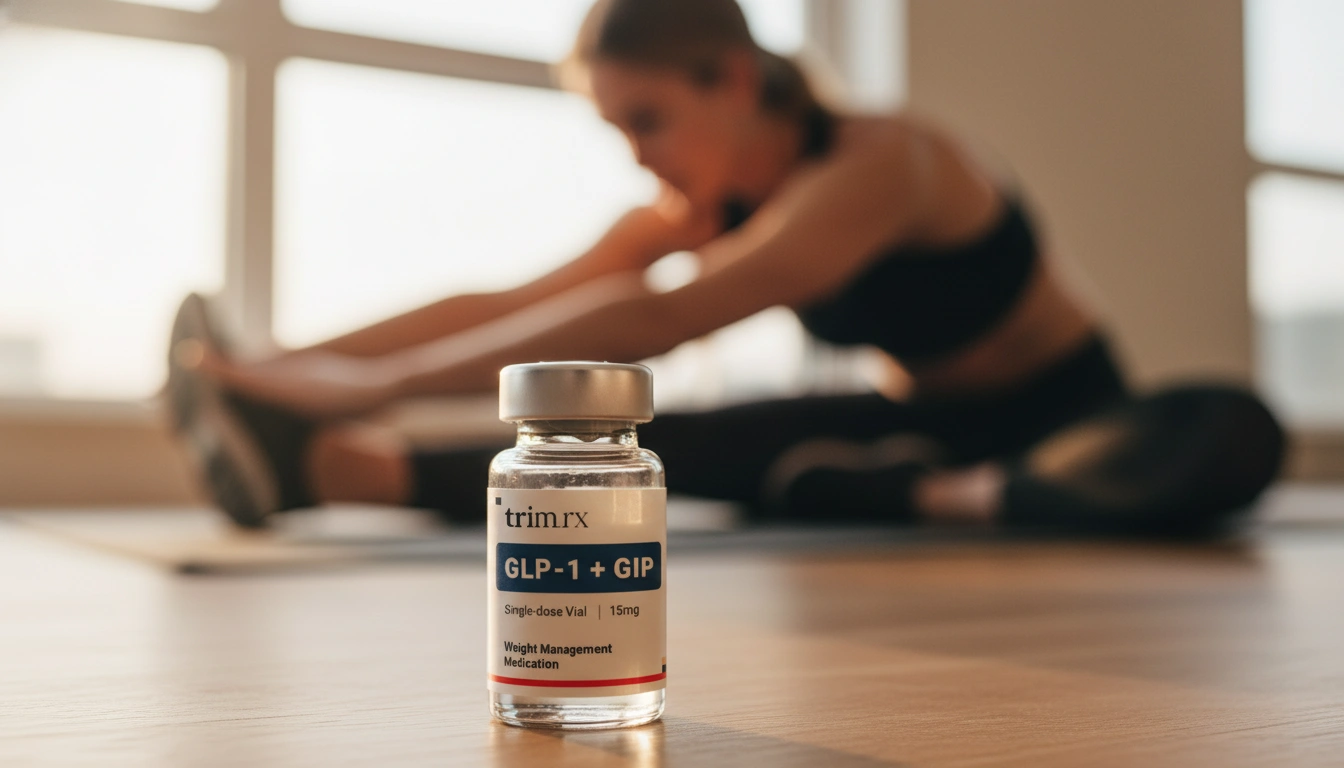Where Is GLP-1 Produced and How It Affects Your Health

Introduction
Did you know that the human body has a remarkable ability to regulate blood sugar levels, and much of this process hinges on a hormone called glucagon-like peptide-1 (GLP-1)? This peptide plays a crucial role in glucose metabolism, appetite regulation, and overall energy balance. The fascinating aspect of GLP-1 lies not only in its function but also in its production sites, primarily located within the gut. As we delve into the intricacies of GLP-1, we aim to uncover its origins, its physiological effects, and the potential therapeutic applications that have emerged from understanding this vital hormone.
In this blog post, we will explore the following key points:
- The production sites of GLP-1 in the human body
- The physiological roles of GLP-1 and its impact on blood sugar regulation
- The relationship between GLP-1 and obesity management
- The therapeutic potential of GLP-1 receptor agonists in treating diabetes and other metabolic disorders
- How TrimRx promotes healthier lifestyles through personalized weight loss solutions that leverage the understanding of GLP-1.
By the end of this post, we hope to provide clarity on where GLP-1 is produced and how it plays a crucial role in maintaining our metabolic health.
The Production of GLP-1: Understanding the Origins
GLP-1 is primarily produced in L-cells, which are specialized cells located in the lining of the intestine. These L-cells are predominantly found in the distal ileum and colon, although they also exist in smaller quantities in the jejunum and duodenum. The synthesis of GLP-1 starts from a larger precursor molecule known as proglucagon, which is cleaved to produce various peptides, including GLP-1.
The Role of the Gut in GLP-1 Production
The secretion of GLP-1 is stimulated by food intake, particularly when nutrients are present in the intestines. Upon meal consumption, the L-cells sense the presence of nutrients—such as carbohydrates and fats—and respond by releasing GLP-1 into the bloodstream. This release occurs in a biphasic pattern, with an initial rapid release followed by a more sustained release, effectively modulating insulin secretion and glucose metabolism.
Interestingly, GLP-1 is not only produced in the gut; it is also synthesized in smaller amounts in the brainstem and pancreas. The central nervous system (CNS) can produce GLP-1 in certain neurons, particularly in the nucleus of the solitary tract (NTS), which suggests that GLP-1 may have both peripheral and central roles in regulating metabolism.
Factors Influencing GLP-1 Secretion
Several factors can influence the secretion of GLP-1, including:
- Nutrient Composition: Different types of nutrients can stimulate varying levels of GLP-1 secretion. For instance, carbohydrates and fats are particularly effective at inducing GLP-1 release.
- Neural and Hormonal Signals: The gut-brain axis plays a significant role in regulating GLP-1 levels. Neural activity and hormones such as gastric inhibitory polypeptide (GIP) can enhance GLP-1 secretion.
- Circadian Rhythms: Some studies suggest that GLP-1 levels may vary throughout the day, influenced by circadian rhythms and meal timing.
The Physiological Roles of GLP-1
GLP-1 is classified as an incretin hormone, meaning it enhances insulin secretion in a glucose-dependent manner. This characteristic makes it particularly effective in regulating blood sugar levels, especially after meals. Here are some of the primary physiological effects of GLP-1:
Insulin Secretion
One of the most critical functions of GLP-1 is its ability to stimulate the pancreas to release insulin. When blood sugar levels rise after a meal, GLP-1 enhances insulin secretion from pancreatic beta cells, helping to lower blood sugar levels. This insulinotropic effect is particularly pronounced in individuals with type 2 diabetes, where GLP-1 receptor agonists are often used to enhance glycemic control.
Inhibition of Glucagon Secretion
In addition to promoting insulin release, GLP-1 also inhibits the secretion of glucagon, a hormone that raises blood sugar levels. By suppressing glucagon secretion, GLP-1 helps maintain overall glucose homeostasis, particularly after food intake.
Delayed Gastric Emptying
GLP-1 slows down gastric emptying, which means that the food remains in the stomach for a longer duration. This delayed gastric emptying contributes to a prolonged feeling of fullness, which can help reduce overall food intake and aid in weight management.
Appetite Regulation
GLP-1 acts on specific areas of the brain involved in appetite regulation, promoting feelings of satiety and reducing hunger. This central action is crucial for managing body weight and preventing overeating.
GLP-1 and Obesity Management
The connection between GLP-1 and obesity is significant. Since GLP-1 plays a role in appetite regulation and energy expenditure, it has become a target for weight loss therapies. Here are some insights into how GLP-1 can aid in obesity management:
GLP-1 Receptor Agonists
GLP-1 receptor agonists (GLP-1 RAs) are medications designed to mimic the effects of GLP-1. These drugs enhance the body’s natural response to glucose, leading to improved insulin secretion, reduced glucagon levels, and decreased appetite. Some commonly known GLP-1 RAs include semaglutide, liraglutide, and dulaglutide.
These medications have shown remarkable efficacy in promoting weight loss in individuals with obesity. Clinical studies have demonstrated that patients treated with GLP-1 RAs experience significant reductions in body weight, improved glycemic control, and reduced cardiovascular risk factors.
The Role of TrimRx
At TrimRx, we understand the importance of personalized care when it comes to weight management. Our journey began with a vision to help individuals embrace healthier lifestyles through cutting-edge telehealth innovations. We offer personalized weight loss programs that incorporate GLP-1 RAs and emphasize the importance of a comprehensive approach that includes medical supervision, consultations, and support.
Our personalized assessment quiz is designed to determine eligibility for prescription weight loss medications, ensuring that each individual’s unique needs are met. We invite you to take our free assessment quiz to discover if you qualify for our prescription weight loss medications here.
Therapeutic Applications of GLP-1
The therapeutic potential of GLP-1 extends beyond diabetes and obesity management. As research continues to unveil its multifaceted roles, several important applications have emerged:
Cardiovascular Health
GLP-1 receptor agonists have shown protective effects on cardiovascular health. Studies have demonstrated that GLP-1 RAs can improve endothelial function, reduce inflammation, and lower blood pressure. These benefits are particularly relevant for individuals with type 2 diabetes, who often face increased cardiovascular risks.
Neuroprotection
Recent studies have explored the neuroprotective effects of GLP-1 in conditions such as Alzheimer’s disease and Parkinson’s disease. GLP-1 RAs have been shown to reduce neuroinflammation, promote neuronal survival, and enhance cognitive function. This emerging area of research highlights the potential of GLP-1 as a therapeutic target for neurodegenerative diseases.
Gastrointestinal Disorders
GLP-1 is also being investigated for its role in managing gastrointestinal disorders, including non-alcoholic fatty liver disease (NAFLD) and inflammatory bowel disease (IBD). By regulating appetite, reducing inflammation, and improving insulin sensitivity, GLP-1 RAs offer a promising avenue for addressing these conditions.
Conclusion
In summary, GLP-1 is a vital hormone produced primarily in the intestinal L-cells, playing an essential role in blood sugar regulation, appetite control, and overall metabolic health. Understanding where GLP-1 is produced and its physiological functions opens the door to innovative therapeutic approaches for managing obesity, diabetes, and other related health issues.
At TrimRx, we are dedicated to helping individuals achieve sustainable weight loss through personalized programs that incorporate the science of GLP-1. Our comprehensive services include doctor consultations, medication, lab work, unlimited support, and shipping with no hidden fees. If you’re interested in exploring how GLP-1 can fit into your weight loss journey, take our free assessment quiz here and discover the tailored support we offer.
FAQ
What is GLP-1 and why is it important?
GLP-1, or glucagon-like peptide-1, is a hormone produced in the intestines that helps regulate blood sugar levels, suppress appetite, and promote feelings of fullness after meals.
Where is GLP-1 produced?
GLP-1 is primarily produced in L-cells in the intestinal lining, particularly in the distal ileum and colon. It is also synthesized in smaller amounts in the pancreas and certain neurons in the brain.
How does GLP-1 affect blood sugar levels?
GLP-1 enhances insulin secretion, inhibits glucagon release, and slows gastric emptying, all of which contribute to lowering blood sugar levels, especially after meals.
What are GLP-1 receptor agonists and how do they work?
GLP-1 receptor agonists (RAs) are medications that mimic the action of GLP-1. They enhance the body’s natural response to glucose, leading to increased insulin secretion, decreased appetite, and improved glycemic control.
Can GLP-1 be used for weight loss?
Yes, GLP-1 receptor agonists have shown significant efficacy in promoting weight loss in individuals with obesity by reducing appetite and increasing feelings of fullness.
How can I learn more about TrimRx’s weight loss programs?
You can take our free assessment quiz here to see if you qualify for our prescription weight loss medications and learn more about our personalized support.

Transforming Lives, One Step at a Time
Keep reading
Vitamin B12 and GLP-1 Medications: What to Know
GLP-1 medications can lower B12 absorption and intake; learn symptoms, food sources, supplement options, and how to monitor levels.
Semaglutide Injection Site Reactions: What To Know
Learn why semaglutide injections can cause redness, swelling or nodules, how to prevent and treat them, and when to seek medical care.
TrimRx vs Friday’s
Compare TrimRx and Friday’s telehealth GLP-1 weight-loss programs: pricing, medical support, coaching, delivery, and which fits your needs.



